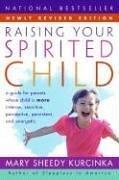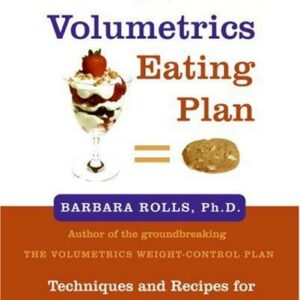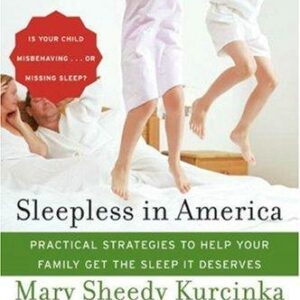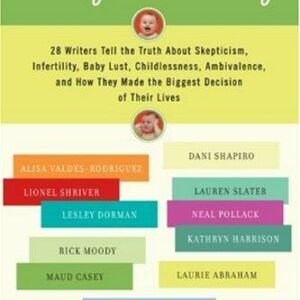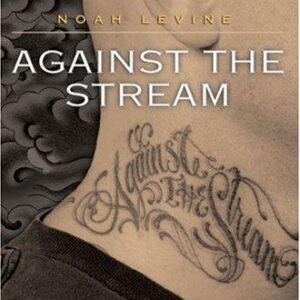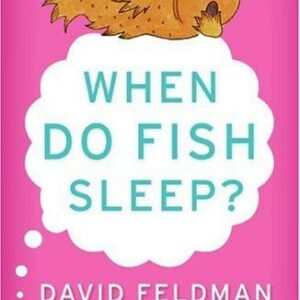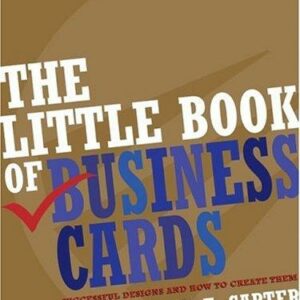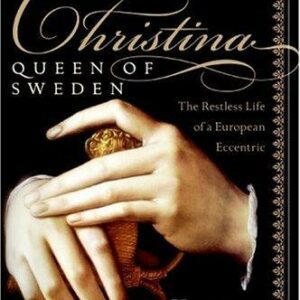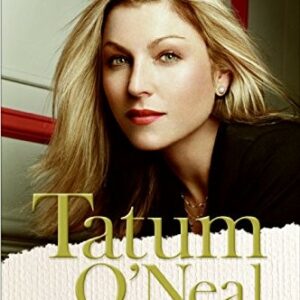A Buffalo in the House
$16.00
| Title | Range | Discount |
|---|---|---|
| Trade Discount | 5 + | 25% |
- Description
- Additional information
Description
A buffalo in the house? Yes, a buffalo. More than a hundred years after her pioneer ancestors hand-raised two baby buffalo to help rescue the species from the brink of extinction, Veryl Goodnight and her husband, Roger Brooks, commit themselves to saving just one. When they welcome an orphaned baby buffalo into their Santa Fe home, they expect him to stay just until he’s old enough to rejoin a herd.
But Charlie becomes a big part of their family life–about two pounds bigger every day.
Surrounded by people and dogs, Charlie has no idea he’s a buffalo–and Roger has no idea how strong the bond between a middle-aged man and a buffalo can be. When Charlie’s eventual introduction to a herd results in a terrible accident, Charlie’s courage and Roger and Veryl’s devotion are pushed to their limits.
Contrasting the nineteenth-century killing of tens of millions of buffalo against our own environmental consciousness, this book asks the question: How far are you willing to go for an animal you love? A love story, a comedy, and a history of the American West, A Buffalo in the House packs a major emotional wallop and will be hard to forget.
“More than a touching man-beast buddy tale . . . Rosen lovingly chronicles the history of an embattled species and its importance in the American West.”
–Entertainment Weekly
“Riveting . . . From the story of one stray baby bison named Charlie . . . and the family that took him in, Rosen has drawn a sweeping history of the American frontier. . . . I can’t remember when I’ve been instructed so gracefully, or entertained to such deep purpose.”
–Jane Kramer, The New Yorker
“Powerful . . . [Charlie is] one of the most memorable characters in recent nature writing.”
–Publishers Weekly (starred review)
“Moving proof of the restorative powers of man’s relationship with nature.”
–People
“If you’re mad for Marley, elated over Elsa the lion, [or] rowdy for Rascal . . . stampede out and get A Buffalo in the House.”
–Huron Daily TribuneR. D. Rosen is the Edgar Award-winning author of Strike Three You’re Dead and other Harvey Blissberg mysteries, as well as several nonfiction books.
1. Before reading A BUFFALO IN THE HOUSE, how much did you know about buffalo? What new things did you learn about the species history in America?
2. On page 15, R. D. Rosen writes: “When the British explored Virginia in 1733, they found hordes of wild buffalo, ‘so gentle and undisturbed’ that men could almost pet them.” How do you think our lives would be different today if the buffalo were able to continue their dominance of the American landscape?
3. Charlie came into Veryl and Roger’s family because of Veryl’s need, and because he’d been abandoned. Have you ever adopted an orphaned pet? What circumstances led you to decide to welcome an abandoned animal into your home?
4. Roger Brooks did not expect to fall in love with Charlie. In fact, he first thought of Charlie as “Veryl’s baby bison.” But he soon realized he had become quite attached without knowing it. In what ways can you relate to Roger’s experience? Have you ever fallen in love — with a pet or a person — unexpectedly? And in what ways do you think we love animals and people differently?
5. In nineteenth century America, politicians were chiefly concerned with removing impediments to westward expansion–and the buffalo (live ones) and American Indians stood in their way and suffered accordingly. Today, what other populations–animal or human–are being threatened or destroyed in the name of “progress”?
6. Can you imagine any other “solution” to the problems presented by tens of millions of buffalo covering the American plains in the 19th century? Or was the Great Buffalo Slaughter inevitable?
7. Buffalo are making something of a comeback these days. Many people would like to see buffalo once again roam the Great Plains, especially in economically depressed areas, where they might attract tourist dollars and also revitalize the soil. Do you think this is a good idea?
8. A growing number of vegetarians highlight the harsh treatment of animals farmed for consumption as their chief reason for removing meat from their diets. Has reading this book, changed your perspective on eating meat? If so, what would you attribute to that change?
9. Even owners of large breed dogs have empathized with Roger and Veryl’s plight as Charlie became a bit too big for the house. If you own a pet, what challenges did you face integrating that pet into your new home? Was it easy to establish boundaries — where it could roam, what it could do?
10. What role do you think Charlie played in his family — aside from sculpture model? If you have a pet, how does it fit in to your family? If you have more than one pet, how did the other(s) respond to new additions?
11. Roger and Veryl are quick to mention that Charlie actually brought them closer together. Does your pet bring you closer to the other members of your family?
12. Because of his unique upbringing, perhaps the biggest challenge Charlie faced was an identity crisis — he didn’t quite distinguish that Roger and Veryl were humans and that he was a buffalo. In what ways did your upbringing inform your sense of identity, of who you are and where you belong? What adjustments did you find were necessary as you got older?
13. Roger and Veryl went to great odds to get Charlie to their home, to raise him, and to care for him under some intense circumstances. How much would you risk to bring an animal into your home? And what would you be willing to do to save its life?
Chapter One
Veryl Goodnight held the receiver against her ear with a shrugged shoulder while she wiped the clay off her hands with a rag. She was a well-known sculptor in bronze of animals, frontier women, and other Western subjects—and a beautiful, young-looking woman in her fifties with a soft, sibilant voice.
“It’s Marlo Goble. How are you today?”
Veryl Goodnight’s heart jumped. Dr. Marlo Goble was a famous orthopedic surgeon with many medical patents to his credit, and a collector of Veryl’s art as well. But at the moment his key credential was that he owned the Medicine Lodge Buffalo Ranch in Idaho, just west of Yellowstone National Park. It was traditional buffalo country and the site of one of the most famous buffalo jumps, where, for thousands of years, the Plains Indians had hunted buffalo en masse by stampeding them off a bluff.
“I’m okay,” Veryl said. “How are you?”
“Oh, I’m just fine. How’s Roger?”
“Just fine. He’s out in the barn with the horses.” She glanced out the window of the studio with its Spanish tile floor and high ceiling. Beyond the barn, even though it was May in Santa Fe, there were still a few dollops of winter snow left on the foothills of the Sangre de Cristo Mountains.
“Good, good. I’m calling because I’ve got a two-day-old bison calf here who needs a mother. The lady postman found him yesterday wandering down by the fence on my property.”
Finally, she thought. With birthing season almost over, she had just about given up hope. It had been three months since Veryl had written letters to five buffalo ranchers in the West, men who knew her and her work, asking them to let her know if and when they had a “bottle baby”—an orphaned buffalo who needed a temporary human home. Unlike genetically compromised, bred-to-be-docile cattle, mature buffalo cows were extremely self-sufficient, rarely died in childbirth, and even more rarely abandoned their young.
“What happened to the mother?” she asked, her eyes gliding over the sculpture of three wolves she was working on. Something wasn’t right. Like any artist, she saw hundreds of flaws where a bystander would see only the miracle of an animal come to life in clay.
“I’ll bet my cowboys were moving the herd to another pasture and they didn’t notice that one of the cows had given birth. The little guy must’ve gotten left behind. By the time we found him, the herd was already miles away. It’s a shame, but the good news is that he got a day of nursing in. That’ll stand him in good stead. You’re welcome to come up and take him home for a while.”
“Well, sure,” Veryl said. “Absolutely. Let me find out when Roger can fly us up.”
“Veryl,” Marlo said, “this one’s a fighter, but I can’t guarantee you he’s going to make it.”
“I know,” she replied, although she didn’t know. It had never occurred to her that she might get a baby buffalo who wouldn’t survive.
“First thing you need to do is go out and load up on powdered goat’s milk, ’cause this little guy can sure suck the heck out of a half- gallon bottle. But, with any luck, at least now you can start that piece of yours.”
“That piece” was a sculpture of a nineteenth-century rancher’s wife bottle-feeding a couple of baby buffalo. Not just any rancher’s wife, and not just any rancher either. Her name was Mary Ann Dyer and she had married a great-great uncle of Veryl’s named Charles Goodnight. Veryl had known for years about her ancestor’s illustrious career as a pioneering cattle rancher in the Texas panhandle. Goodnight was the subject of biographies, a stern but just presence in countless books on the American frontier. However, it wasn’t until the past December, when a friend mailed her an article from Texas Highways magazine, that Veryl had learned that Charles and Mary Ann Goodnight had done something quite extraordinary: they had helped save the American buffalo from total annihilation in the 1870s. Veryl almost immediately decided to immortalize in bronze what Charles and Mary Ann had done for all buffalo. To do that, she needed a buffalo calf, and a very, very young one at that.
She worked almost exclusively from life. For the trio of wolves she was finishing now, she had made three or four trips to the Candy Kitchen Wolf Refuge near the Zuni pueblo in southwestern New Mexico, where she had observed full-blooded wolves that had been rescued, in many cases, from humans who erroneously thought that they might make nice pets. The wolves were the most difficult subjects she’d ever undertaken. They looked so much like dogs that it was hard to capture their “wolfness.” Making a wolf that looked like a dog was easy; making a wolf that looked like a wolf was not. Veryl looked over at Mickey, their Jack Russell terrier puppy, who was lying uncharacteristically still on a rug, snoozing in a patch of sunlight next to Luke, their German shepherd. Except for the occasional twitching leg, neither of them had moved a muscle in over an hour. A statue of sleeping dogs, Veryl thought—now that would be a piece of cake.
As for a buffalo calf, she knew he would be able to model for her right in her studio, as long as it was bottle-nursing, so she could symbolize the remarkable moment in American history when a few humans had nursed a species back from the brink of extinction.
Veryl walked down to the barn, where Roger was feeding his horse Kepler, who shared the barn with Matt Dillon, his other horse, and Veryl’s horse Toddy. As she watched him from outside the stall, she thought, even after thirteen years of marriage: how lucky can one girl be?
Roger, retired now for several years as a commercial airline pilot, was a handsome, big-boned man, over six feet, thick as a linebacker, with a lightly freckled face red from the sun and a boyish head of graying blond hair. No one would be surprised to learn that he had once flown secret missions in Laos for the CIA, or had a first-degree black belt in karate, or still played competitive soccer. He looked like just the sort of man you’d want by your side in a war or mudslide or barroom brawl. He was exactly the kind of airline pilot you were glad to see smiling by the cockpit door as you boarded his plane.
Roger had a wry sense of humor that he indulged on rare occasions. His particular mix of openness and reserve made him entirely familiar and unknowable at the same time. When he confided in you, you were only more aware of what he wasn’t telling you.
Roger had a gift for reading people quickly and could usually figure out within a few sentences who was capable of a real exchange of ideas and who just wanted to hear himself talk. As a result, he rarely found himself in a conversation he didn’t want to be in, which saved him a lot of words. He knew how to turn aside insipid salesmen and ranting strangers with a smile. Roger hadn’t married until his forties, back in the late 1980s. He was waiting for the right woman to come along. She turned out to be Veryl Goodnight, then in her late thirties, who had obviously been waiting for the right man.
“Guess what?” she asked, beaming.
Roger turned from Kepler and sized up her excitement. “You got a baby bison?” It was just like him, one step ahead of everyone else.
“Marlo Goble just called. The calf’s only a couple of days old and Marlo wants us to come up and get him.”
“Then that’s what we’ll do,” Roger said.
Helped along by an MBA earned long ago at Arizona State, Roger ran the business-and-marketing end of Goodnight Fine Arts, managing everything from balancing the books and negotiating the contracts with foundries and collectors to handling mailings about Veryl’s upcoming shows. He was as comfortable with the industrialists who bought sculptures as the crane operators who lowered them into place.
A couple of days after Goble’s call, and all because of what had happened 125 years before in the Texas panhandle, Veryl Goodnight, Roger, and Mickey the Jack Russell terrier climbed into the turquoise- copper-and-white Cessna Conquest twin-engine turbo-prop that Roger co- owned and flew two hours north-by-northwest, biting off the northeast corner of Utah and the southwest corner of Wyoming before landing in Idaho Falls. Marlo Goble picked them up and drove them for hours up the long valley before turning onto the dirt road leading to his Medicine Lodge Buffalo Ranch. When they got out of the car, Doris Brienholt, a petite blonde who managed the ranch with her husband Stuart, was already coming toward them with her border collie. Behind them, bouncing along like just another member of the family, was an animal not much bigger than a golden retriever, and with almost the same coloring—a rusty red body and a honey-colored face. If it weren’t for his broad black nose, he could have been mistaken for the long-legged family dog.
Mickey the Jack Russell, appointing himself chairman of the greeting committee, dashed up to the calf, got on his hind legs, and kissed him on the muzzle. Veryl came up behind Mickey, knelt, and took the calf’s soft face in her hands. “Hi, sweetie,” she said, surprised by a lick in the face. It was difficult to believe that the animal had been in his mother’s womb less than a week before, and that, if he survived, he would someday become a shaggy two-thousand-pound example of one of the greatest, most haunted, and certainly most hunted species ever.
They stayed three days. Marlo, Roger, and Veryl rode out on horseback to look at Marlo’s herd. Somewhere in that woolly mass of bison was a mother perhaps still wondering what had happened to her newborn. Back at the house, Doris taught Roger and Veryl how to mix the formula. In the wild, orphaned calves attach themselves to anything large and moving—as Meriwether Lewis had found out two hundred years before on his and William Clark’s expedition, when a young bison attached himself to him for an entire afternoon. It was easy to see by the way the week-old calf nursed contentedly at Doris’s side that he had imprinted on her. The trick now was to transfer the imprinting onto Veryl and Roger, a process helped immensely each time one of them showed the calf a half-gallon bottle of powdered goat’s milk. As Veryl struggled to hold the bottle while the calf bunted and pulled, she saw that Marlo hadn’t been joking about the week-old calf’s appetite.
When it was time for Roger and Veryl to leave with the buffalo, Doris was so sad to see him go that she refused to make the drive back to the airport. On the airstrip, the calf polished off a bottle before Roger and Marlo herded him into a dog crate and loaded him into the cabin of the eight-passenger Conquest. Roger slid two of the chairs back on their tracks to make room. As Roger taxied for takeoff, Veryl sat next to the crate and reached through the bars to give the calf a pacifier, for which he thanked her with a soft grunt. By the time they reached the end of the runway, the calf was already asleep. Roger banked over Idaho Falls, headed south, and climbed to 27,000 feet, no doubt the altitude record for a week-old buffalo. Other than that, the flight was uneventful.
They decided to name him Charlie.
ttwo
Charlie’s namesake, Charles Goodnight, saw his first buffalo as a nine-year-old boy in the 1840s along the banks of the Trinity River, today the site of downtown Dallas. Like most people, he had been fascinated by their strength and staggering numbers. By the 1870s, Goodnight had been a Texas Ranger, legendary trail driver, cattle rancher and breeder, and inventor of the chuck wagon—and was well on his way to being widely acknowledged as “Father of the Texas Panhandle.” Cattleman though he was, he was troubled by how rapidly the buffalo were disappearing; Goodnight realized that a world that had existed for thousands of years—a world that had belonged to the Indian and the buffalo—was coming to an end.
Once there had been 30 million buffalo in the United States, maybe 40. Some estimates (now considered by many to be grossly inflated) put the number as high as 80. Until 1860, even at the lowest number, there were more buffalo in America than people. At the beginning of the nineteenth century, Meriwether Lewis and William Clark had found it impossible “to calculate the moving multitude which darkened the whole plains.” Another observer was more poetic: “The world looked like one robe.” The country was teeming with buffalo, herds of them hundreds of thousands strong, a vast shaggy carpet of buffalo miles long and miles wide. On first seeing them, men were apt to rub their eyes and question their sanity. There were places where the buffalo weren’t just on the land; they seemed to be the land. If you couldn’t see them, you could hear them coming, well in advance, an apocalypse on hooves. Sometimes it took days for them to run past a fixed point. Some claimed you could have walked ten miles across their backs without ever touching the ground. In his memoir, the prolific buffalo hunter J. Wright Mooar estimated the Southern herd in the millions. “For five days,” he wrote of a hunting trip in 1873, “we had ridden through and camped in a mobile sea of living buffalo.” For much of the nineteenth century, trying to calculate their number was a favorite pastime of hunters, settlers, naturalists, and
soldiers.
Over the millennia, since the last Ice Age, the buffalo had come over the Bering Land Bridge from Asia, spreading east and south. Into the nineteenth century, they roamed what are now all the states in the continental United States except Connecticut, Rhode Island, New Hampshire, Vermont, and Maine. When the British explored Virginia in 1733, they found hordes of wild buffalo, “so gentle and undisturbed” that men could almost pet them. By the 1830s, however, the buffalo that had once roamed the East Coast from New York to Georgia had been virtually eliminated by Indians, colonists, weather, and disease.
By the 1840s, the buffalo population in the West had been whittled down as well. The buffalo on the west side of the Continental Divide were already gone, victims of the heavily trafficked Oregon Trail, with its endless wagon trains full of hungry settlers. That left the tens of millions of buffalo on the short- and long-grass prairies, but their days were numbered too.US
Additional information
| Weight | 8 oz |
|---|---|
| Dimensions | 0.6100 × 5.2000 × 7.9800 in |
| Imprint | |
| Format | |
| ISBN-13 | |
| ISBN-10 | |
| Author | |
| Audience | |
| BISAC | |
| Subjects | eco friendly gifts, biographies, nature books, wolves, memoirs, PET010000, animal stories, nature lover gifts, autobiographies, gifts for animal lovers, NAT001000, horse, memoir books, biographies of famous people, autobiography books, gifts for pet lovers, biographies and memoirs, animal lover gifts, cat books for adults, horse books, dog books for adults, animal books, animal, nature, horses, cats, education, family, biography, Memoir, Animals, Dogs, inspirational, pets, true story, rescue, short stories, farm, autobiography, true stories, wildlife, dog |


